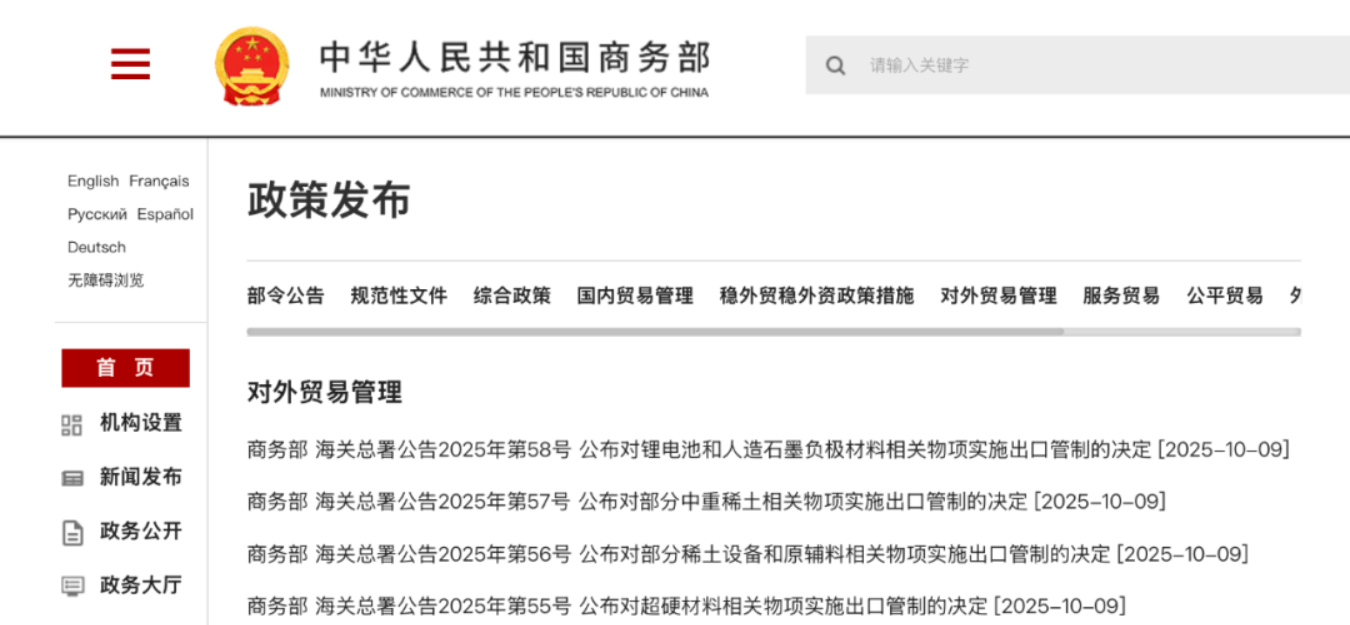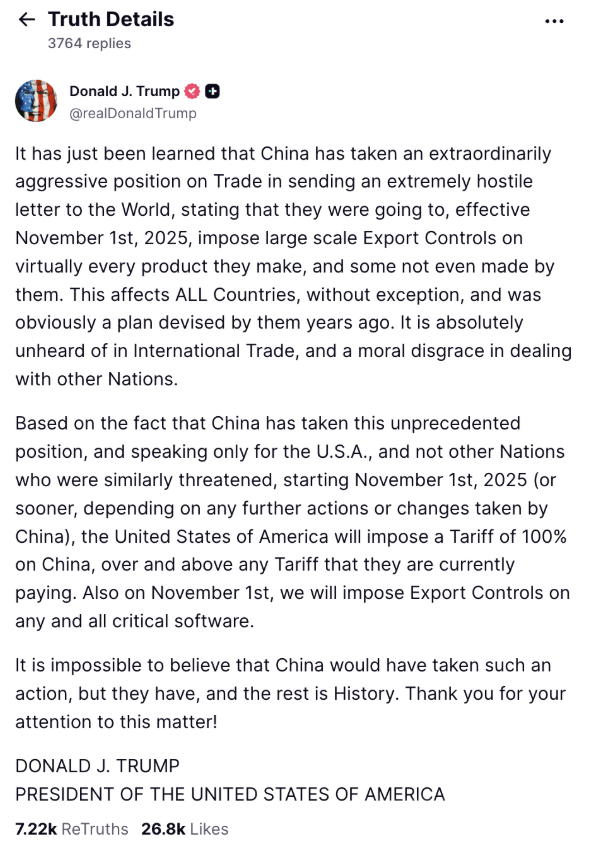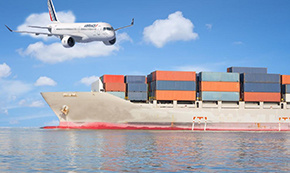All categories >
Breaking news! Trump announces that, starting November 1, tariffs on China will be raised by 100%, hitting all goods!
Categories:
News Center
News
Time of issue:
2025-10-17 15:46
Views:

The Chinese side emphasized, The relevant countermeasures are acts of "self-defense." We hope the U.S. side will carefully consider, correct its wrong practices, and move forward together with China. Find solutions to problems through equal consultation and cooperation.
These strong countermeasures hit Trump right where it hurts the most. Trump, upon hearing the news, was furious and immediately issued a shocking statement on the Truth Social platform: Starting November 1, 2025, the U.S. plans to impose a new 100% tariff on all goods imported from China, alongside the implementation of export controls on "all critical software."

This declaration means that, The average U.S. tariff on goods from China will surge from the current 57% to over 150%. Recording the highest level since the China-U.S. trade friction began.
It is worth noting that, Trump's threat comes with a double "flexibility clause":
One is that the effective date can be "advanced";
Second, the scope of application is claimed to cover "all products," It emphasizes in the text that "this tax rate is significantly higher than any tariff level currently paid by the Chinese side," aiming to project a tough, pressure-inducing stance.
The "Way to Break the Impasse" for Cross-Border Sellers
Facing the tariff "roller coaster," Cross-border professionals have long since shifted from passive responses to proactive strategies. Three paths are gradually becoming clear:
01 Short-term: Lock in window-period inventory and control compliance costs.
China-U.S. trade once saw a precedent of "orders surging by 300% after mutual tariff cuts," and while Trump's current threats haven't yet translated into formal policy, this remains the perfect window for stockpiling.
02 Mid-term: Strategically diversifying the "supply chain" to reduce reliance on the U.S. market
By leveraging innovation to tap into the high-end markets of Europe and Southeast Asia, the U.S. market share has dropped from 60% to 30%, while the company's ability to withstand risks has doubled.
Data shows that recently, cargo ships from the U.S. route at Yantian Port have shifted to routes serving South America and Europe, while shipping companies are simultaneously deploying extra vessels to support emerging markets—providing sellers with crucial logistical backing.
03 Long-term: Forging "Product-Driven Strength" to Navigate Policy Cycles
Winning the market hinges on product competitiveness—tariff fluctuations are merely short-term variables. Even when faced with rising tariffs, products can still maintain profit margins by virtue of their irreplaceable value.
Trump's threat of a 150% tariff is, at its core, yet another farce that politicizes economic and trade issues. China's control over rare earths is a legitimate measure to safeguard national security. The diversified strategies of cross-border sellers are an organic choice dictated by market dynamics. Meanwhile, the U.S. side's ongoing unilateral bullying will only make more countries see clearly the true face of a "rule-breaker."
Keywords:
U.S. Tariffs,China-U.S. Trade










